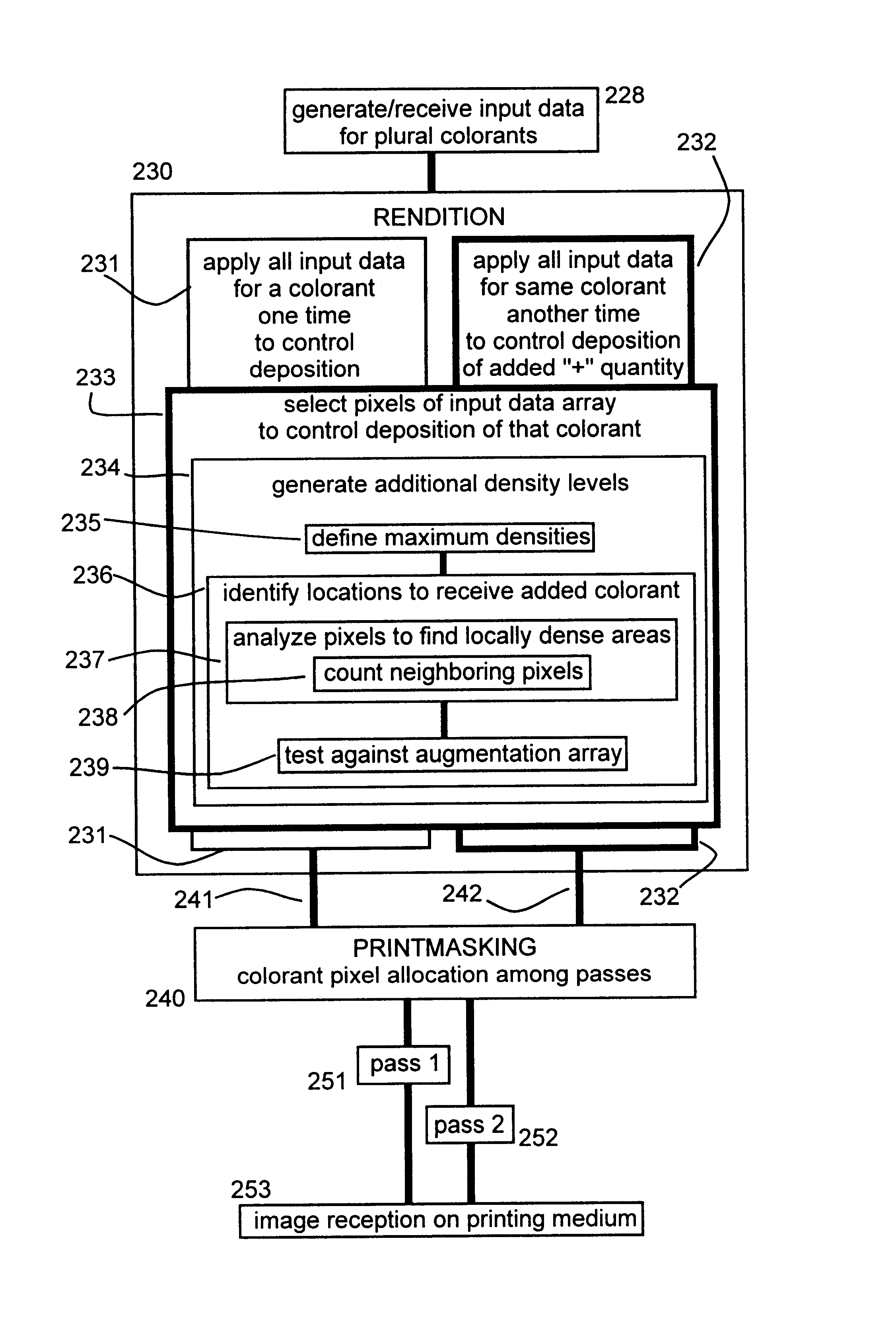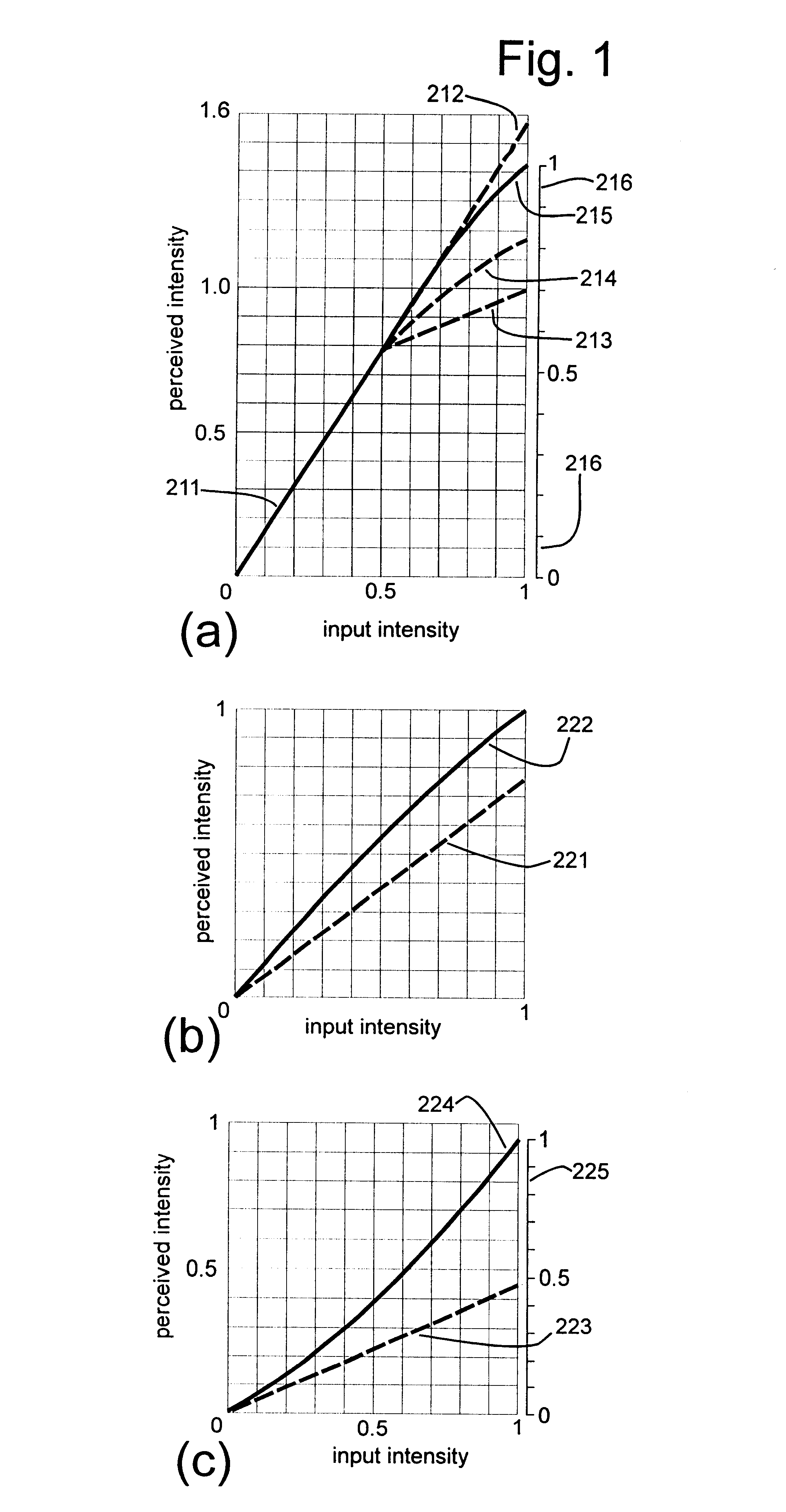Pixel-density augmentation and adjustment with minimum data, in an incremental printer
a technology of pixel density and incremental printers, applied in the direction of image enhancement, visual presentation using printers, instruments, etc., can solve the problems of reducing the intensity of the image, reducing the density of the image, and difficult holding a nominal dot size, etc., to enhance the enjoyment of overall benefits and extend the density range
- Summary
- Abstract
- Description
- Claims
- Application Information
AI Technical Summary
Benefits of technology
Problems solved by technology
Method used
Image
Examples
Embodiment Construction
1. PROPLETION--PLURAL USAGE OF DATA TO ADD COLOR
According to preferred embodiments of the invention, an image is rendered with one bit per pixel-colorant combination, but this bitmap is used plural times. As a result the system produces composite dots, of a common colorant, at selected pixels that are--
plural dots 201, 203, or 204, 205 (FIG. 2) printed in substantially the same positions and thus more intense by virtue of additive, see-through effect of the double colorant dose; or
plural adjacent dots 208, 209 which are more intense by virtue of the (1) larger subtended visual angle of the painted region, and (2) smaller remaining unpainted print-medium area; or plural offset dots 206, 207 or nested dots (not shown) forming composite dots that are larger and thus more intense--due partially to each of the two effects just mentioned.
The basic advantage of this invention is that intensity range can be stabilized and linearized without addition of data or bandwidth.
Added data-processin...
PUM
| Property | Measurement | Unit |
|---|---|---|
| time | aaaaa | aaaaa |
| density | aaaaa | aaaaa |
| nonlinear colorant-deposition response | aaaaa | aaaaa |
Abstract
Description
Claims
Application Information
 Login to View More
Login to View More - R&D
- Intellectual Property
- Life Sciences
- Materials
- Tech Scout
- Unparalleled Data Quality
- Higher Quality Content
- 60% Fewer Hallucinations
Browse by: Latest US Patents, China's latest patents, Technical Efficacy Thesaurus, Application Domain, Technology Topic, Popular Technical Reports.
© 2025 PatSnap. All rights reserved.Legal|Privacy policy|Modern Slavery Act Transparency Statement|Sitemap|About US| Contact US: help@patsnap.com



